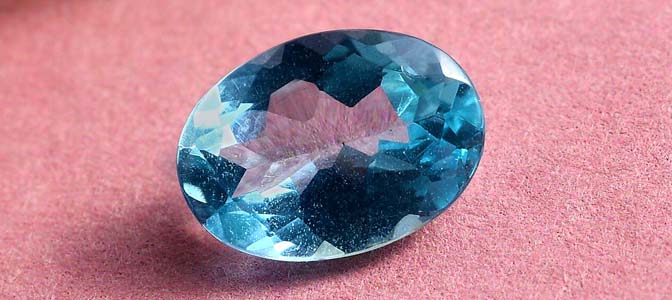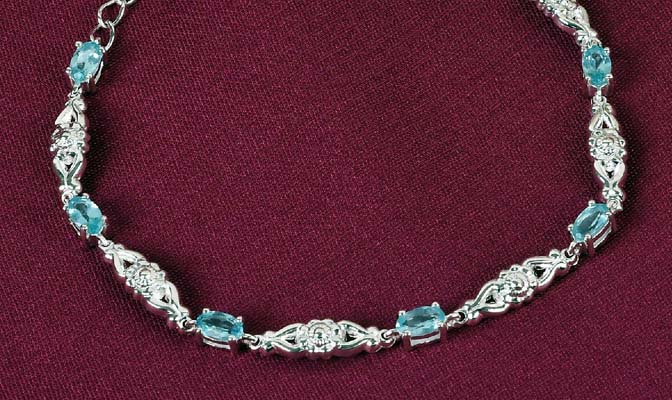Apatite gem is rich in variety and so in sources. It is currently sourced from every corner of the earth. The places include Myanmar (Burma), Brazil, India, Kenya, Madagascar, Norway, Sri Lanka, South Africa, Mexico, Canada and the United States.

Introduction
Mesmerizing in colour and available in various hues, the Apatite is a group of phosphate minerals that share similar chemical composition and physical properties. Apatite is a traditional and relatively uncommon gemstone which is a group of phosphate minerals including other elements. This magnificent gemstone comes in a wide range of colours varying from neon and different shades of blue, purple and red and as a result with this kind of exposure it has gained a certain level of popularity and demand. Apatite is considered to be an inspirational and fascinating gemstone.
Now with time, this rare gemstone has come out with the primary choice of jewellery connoisseurs. It is said to foster one's creativity, intelligence, communication skills, self-confidence and concentration. According to Greek mythology, the term Apatite hailsfrom the word Apatao. The word Apatao relates to the Apate, the Goddess of deceits. Apatite is often used in feminine jewellery where it can capture and safely display its best beauty.
New Arrivals in Apatite

Origin & History
The Apatite is most commonly found in sedimentary, metamorphic, igneous, and volcanic rocks. Apatite can shape through sedimentary processes when the erosion is formed due to friction of waves. It can also develop during igneous processes (e.g., Plutonism), metamorphic processes, and in a fissure on the seafloor also known as hydrothermal vents. It can also be the production of a biological system in some cases. It is only one of the few minerals that are constructed and used by the micro-environmental networks. Apatite is most popularly found in the violet, pink, yellow, blue, brown, green and colourless form.
Gemstone connoisseurs also know Apatite especially for two colours – the Paraiba- like blue-green and leek green, this pleasant gemstone comes into light in the mid of 1990 and unearths in Madagascar. At present Madagascar, Brazil, Mexico and Mozambique are the adequate suppliers of this fantastic beautiful gemstone.

Facts about Apatite
- If not for the softness, apatite can be a heart-winning gemstone.
- A collector can own as much as twenty different Apatites with gorgeous hues and different shades.
- The stone breaks by both, a fracture and cleavage.
- The attractive apatite stones with gorgeous colours are often carved in cabochon form.
- Apatite is most popular for gem collectors then in jewellery.
- Apatite is often confused as a beryl stone, as both of them are found in pegmatite rocks.
- In history, the Apatite was observed to have chameleon-like qualities, where it resembled many popular stones and hence it was names after a Greek word “to deceive,” due to its properties and colour.
- The Apatite crystal has similar elements as in our teeth and bones.
- Composed from a common group of minerals containing the calcium phosphate, Apatite is said to help us realize the importance of truly knowing ourselves.
- Apatite gemstone is further believed to help you get a balance of life and conduct your daily tasks with ease and healthy mindset.

Properties of Apatite
With beauty and unique formation, the Apatite is also rich in features. A melange of phosphate minerals are present in an Apatite, the gem is rare and ranks five on the Mohs scale. The stone is sensitive and hence can easily brittle or scratch while forming a jewellery piece. Its extraordinary glare and physical characteristics have lured people from all over the world. Other than the incomparable properties, the apatite gemstone is widely used by people of all regions and professions, suggestion that it is not really priced high and is reasonable to buy.
- Colour: Predominantly, this beautiful gemstone is found in two primary colours, light bluish-green and dark bluish-green. However, the place Madagascar is very popular for producing blue colour apatite gemstone in the world. It is available in fascinating tones and with the blue colour ruling the most, it successfully presents the depth like any wonderfully water body or a pool of blue.
- Cut: The Apatite is available with indistinct cleavage quality. The stone is sensitive to heat and has brittle structure. The surface is offered with smooth Conchoidal fractures and hence has no planar surfaces of internal weakness or planes of separation.
- Clarity: Transparent specimens of Apatite mostly in blue, vivid green are showcased with excellent clarity. The gemstone is often heat-treated to enhance the vibrance and colour. Apatite gemstone often features Chatoyance appearance, which is also well recognized as Cat’s eye, in simple words reflecting and displays the effect like a cat’s eye.
- Carat: The blue coloured Apatite gem is very rare in a larger size, from Myanmar, it is generally produced of 10-carat however, in Brazil, they hardly range above 1-2 carats. The yellow Apatite from Mexico ranges up to 15-20 carats, but again the larger size than this is an exception. The smallest and rarest of all, the violet or dark blue stones usually are available less than 2 carats.

What to Remember While Buying?
- An Apatite is a brittle stone and hence can only be used in jewellery by the experts.
- Scratch test can be performed to determine the hardness.
- Apatite stones are also developed in laboratories for or medical research, industrial laser applications and to use as agricultural fertilizers.
- Some of the synthetic Apatite has found their way in jewellery world as well, so stay active while looking for a genuine natural gem.
- Natural Apatite does not display any colour change; however the synthetic one’s showcases a change in colour.
- Heating treatment is used specially in blue and green Apatite to enhance colour.
- Sensitive and extremely brittle, apatite gem should be cut and carved carefully.
- The apatite is acid, heat, and shock sensitive.
- They require extreme care and proper storage as opals.
- Never use mechanical cleaning systems on the Apatite stones.
Types of Apatite
The different types of emerald can also be categorised depending on where they’re sourced from. Every single parent location of the said stone offers a unique and different touch to the gem, be it in form of colour, clarity, or lustre. Below are mentioned some of the more popular origins and where TJC gets its emerald gems from:
- Chlorapatite: The Chlorapatite is a member of the Apatite family from the Chlorine end. Just as Apatite, this stone is also brittle and ranks the same on the Mohs scale of hardness. It can display weak to moderate colour play and just like Apatite is transparent and features a brilliant transparency. The name of this particular stone was given in 1860 by Carl F. Rammelsberg. The gem is chlorine-rich calcium phosphate which is related to the Apatite family without a doubt. It is usually rare to find and uncommon to abstract as the other types. It is found in calcium silicate marbles, in layered Mafic-ultramafic layered intrusions and diabases.
- Fluorapatite: Fluorapatite is by far the most common and close member of Apatite family. It is connected to the family from the fluorine end. The stone is available from a variety of source that includes almost every igneous rock, accessory mineral, in microscopic crystals. It can be found in the form of considerable size in alkaline igneous rocks, as late-magmatic segregations. The stone is offered with the gravity of 3.1-3.25 and can have vitreous to Waxy and greasy lustre. The chemical formula of this particular stone is Ca5(PO4)3F, and it ranks five on Mohs scale of hardness, like any other Apatite stone.
- Moroxite: The bluish to green variety of Apatite family, the Moroxite is found formerly at found Arendal in Norway. The name Apatite is derived from a Greek word for stone used by the Ancients in bleaching linen. The stone is occasionally cut and carved, but due to the fragile and soft nature, it is at specific points restricted to be used in jewellery. The stone is available with fair cleavage and Conchoidal fracture. It is transparent like Apatite and has a clear nature. The lustre of the stone is vitreous and gorgeous.
- OpeVanadinite: The lead of vanadate chloride, this stone belongs to Apatite family. Unlike Apatite group, this particular member is red in colour. They are more on the broader side than the length and are further available in orange hues as well. It looks luxurious and regal with a deep red colour and pure lustre. This red range can be found in the USA, Mexico, Namibia, Zambia and South Africa. The stone is widely recognized for its healing properties and is often believed to benefits for people who have problems accepting their own bodies. It is said to have a secure connection to the base chakra and hence can be great for stone collectors.
- Wilkeite: Abstracted from metamorphosed marbles, the Wilkeite is silicate—sulfate form of apatite stone. It is named after a mineral collector R. M. Wilke; he was a collector and dealer in Palo Alto, California. The lustre of this particular stone is from Vitreous to resinous. It is transparent to translucent and is available with imperfect cleavage. The gem is rare and extremely exquisite.
FAQ's
Where does the stone apatite come from?
Can you put apatite in water?
Generally, Opaque stones like Apatite are safe to clean with pure water. However, the stone is sensitive and requires a lot of attention and care since it can easily break.
What rock is apatite found in?
The gorgeous Apatite stones are found in igneous, sedimentary and metamorphic rocks. They are further widely distributed in the sourcing field due to their variety and forms.
Is apatite rare?
As much we would love to make it rare, the Apatite stone is common, but the ones with the quality and beauty of gem are rare. Considering the fragile nature of the stone, not every stone can be carved as a jewellery gemstone and hence the ones with such ability are sporadic.
Can apatite scratch glass?
No, an Apatite is very sensitive and ranks 5 at Mohs scale of hardness and hence is not as strong as other gemstones out there in the gem and jewellery world. It is advised to handle with lots of care and love.
Can apatite scratch glass?
No, an Apatite is very sensitive and ranks 5 at Mohs scale of hardness and hence is not as strong as other gemstones out there in the gem and jewellery world. It is advised to handle with lots of care and love.
How do you clean apatite?
Apatite can be easily cleaned using a soft cloth and warm, soapy water but is always suggested to keep separately from other gemstones, considering the fragile nature and sensory properties of the stone. It is brittle and can break easily if ever come in contact with a hard surface or force.
Is Blue apatite heat treated?
Not just blue, many Apatites are treated to enhance colour. They are available with massive diversity in nature, but generally green and blue ones are processed further to get a vivid and robust tone.
What is apatite family?
The family is related to one another with a strong common connection with phosphorus as a prime mineral. They have similar chemical compositions with various colours and different origins. Like a family, they have a common root; however, they have different natures and uses.
Why is apatite used in fertilizer?
The stone Apatite is rich in phosphorous, an important and vital nutrient for plants. The phosphorous used in plants is derived from phosphate rocks which again have similar chemical nature and behaviour as any Apatite. An Apatite as a gem is rare to find.







































